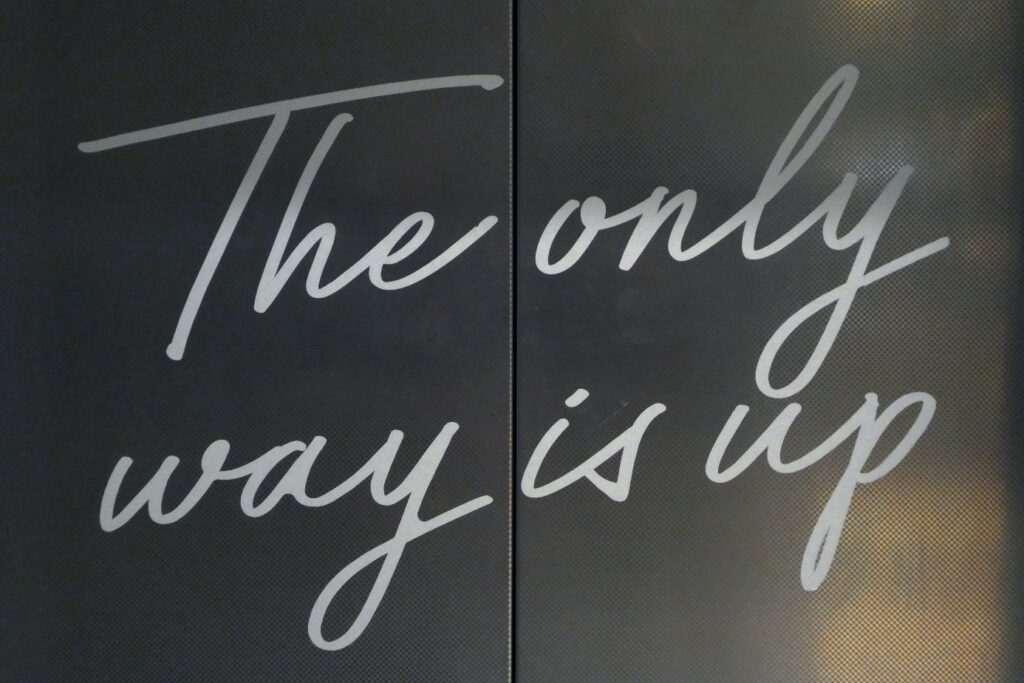
I am more than my name
I am More Than My Name
Labels and Labelling; Stereotypes; Emotions; Thoughts; Feelings; Beliefs; Values; imprints; Assimilation; Learning; Animus and Anima; The Self; self awareness; self worth; self esteem; self love; self confidence; self respect; self realisation; self honesty; self responsibility; self serving; self pity; self righteousness; self trust; self importance; self punishment; self delusional; self destruction; adaptation; resilience.
It has been said in more than one spiritual practice, that our reality depends on the three worlds and them coming together; these are our thoughts, feelings and emotions.
We label and name, to understand and learn but what is it that we know about ourselves- what label, stereotype or name do we give? How we view ourselves, how we view people and the world and more so us in the world of them.
If we search the word stereotype, we find it is :
‘’a widely held but fixed and oversimplified image or idea of a particular type of person or thing’’ Oxford Language Dictionary

picture by Markus Soiske from unsplash.com
Stereotypes are a generalized belief or set of beliefs aimed at a particular category of people. This being said, stereotypes can and usually are stated unconsciously, sometimes naively, yet they may in many cases also lead to prejudices and/or discrimination towards that certain group of people. They are unconsciously assimilated imprints from your immediate environment.
Emotions themselves are also stereotyped- there is an assumption that women are more likely to experience feelings of ‘fear, sadness and sympathy’ whereas men are more likely to experience ‘anger and pride’ (Plant et al., 2000)
Our beliefs (attitudes we hold to be true) make up our values (importance/worth of something) also our value system and somewhere within the depths of all our experiences in life as well as those observed from second person perspective as well as third person perceptive, are in fact completely unconscious.

picture by Brett Jordan from unsplash.com
An imprint by definition is ‘’a stamp or outline on a surface’’ and coining that within a cultural domain, means a stamp made by ones’ cultural experiences and environment. However once again, as with values and beliefs, cultural imprints are unconscious in their depth and unlike the definition of ‘’imprint’’, in people imprints are deeply embedded in a system of the mind, categorized and assimilated unconsciously yet made concrete and manifested through the domain of language and nonverbal communication ( more on NLP; John Grinder; Richard Bandler).
There is always a form or construct we follow as an internal reference as to what is right/wrong; ugly/beautiful; successful/unsuccessful; powerful/weak; mother/bitch; slut/virgin; anorexic/obese; thin and attractive/ fat and unattractive; flashy/humble this or that. Naturally, categorization is the way we learn from a young age we are taught to differentiate between blue/red, alphabet, number etc, the issue is how discreetly the categorizations gain or have gained a value in our mind and the model we choose to copy and use as reference to get what we want, to be a certain way or act/feel certain things.
Whatever we choose to believe or adhere to, the opposite that instils in us certain emotion(s) is the core of learning. At the root of assimilation, beyond just understanding ‘the other side’ but role-modelling its behaviour or analysing from different perceptual positions, we can start the dissolution of strong held/destructive stereotypes. We learn to ‘’unlearn’’ and through that ‘relearn’ certain aspects of ourselves and others that have led us into stuck representational systems of the world around us.
According to psychoanalyst Carl Jung, there is a concept of complementary-gendered attributes in each individual, this needs to be integrated in order to develop a more complete personality.

picture by Tim Mossholder from unsplash.com
Jung associated women’s psychology with the principle of Eros (Love) as psychic relatedness while men are associated with Logos (the word) as reason. Furthermore, there exists as in the symbolic expression of Ying Yang, a dark in the light and a light in the dark; a female in the male and male in female-Animus and Anima.
Anima is described as feminine side of man and animus as the unconscious male principle in a woman. Both animus and anima are crucial aspects to self- development and a principality of a complete and integrated self.
Jung’s theory and its implications further assert that, a negative animus (masculine principle) could lead to domineering, opinionated, egoistical and controlling aspects of one’s personality. While a negative anima (feminine principle) diminishes and makes women moody, bitchy, controlling, needy and demanding. When men integrate their feminine side, they reclaim their emotions, instinctual responses and their intuitive connection with others (empathy). When women integrate the masculine side the reclaim their independence, have a focused sense of direction and personal power.
Spiritual coach, Anne Matheson sees self -value and value of the self as a dance that flows in seven steps. These are self -awareness; self- worth; self -esteem; self -love; self -confidence; self -respect and self- realisation.
Self awareness is awareness of your existence and that you are different to all other people around you, that you are you. This starts in infants around the age of two years old, when the child learns to distinguish himself/herself from his/her mother/father and understands their own noise, their own doing. The infant also understands how to create and shape surroundings thus acquiring certain patterns of control to help them achieve their desired goal/outcome.
According to Courtney E.Ackerman(MA), ‘Self-awareness is the ability to see yourself clearly and objectively through reflection and introspection. ’In addition to this, Tasha Eurich(PhD) states that there are in fact two types/categories of self- awareness : ‘internal self-awareness’ which shows ‘how clearly we see our own values, passions, aspirations, fit with our environment, reactions (including thoughts, feelings, behaviours, strengths, and weaknesses), and impact on others’. The other, ‘external self-awareness’, is the understanding how others view us in terms of same factors as listed above. One isn’t favoured more than the other but rather an integrated whole of both gives a person advantage in their surroundings.

picture by Ricardo Gomez from unsplash.com
Self-Worth
Self -worth is an understanding as well as acceptance that you have a quality of being and this quality of worth is the same for everyone on our planet. Rather than being developed, self -worth is uncovered and discovered through being emotionally honest with oneself as well as an increased understanding of yourself and others in your immediate environment. The basis of this value develops at the ages of 2-6 years and through the influence of mother and mothering. That being said, if the mothering influence isn’t there or if the mother herself has low sense of self-worth, this trait will properly not develop very solidly. If self-worth isn’t developed well and correctly, it can lead to a person becoming self-centred, ego-centric due to loss of one’s own true power. This in turn can lead to the person never fully becoming an adult, avoiding or keeping away from true intimacy, preventing oneself to fulfilment of one’s goals/dreams as well as the source of emotional pain.
Self-Esteem
On the other hand, self-esteem unlike self-worth is a trait that is actively developed throughout one’s life. As Anne Matheson puts it, ‘’it is the compassion, caring and love for yourself that is established through evaluations of yourself and is based on the criteria you hold for how people should operate in the world’’. Here I will briefly note that the above trait is by far the most complex one since it holds a cluster of patterns that are acquired from early years as well as internal references and modes of sensations and perceptions of oneself and the environment. For this reason, I will further evaluate on this topic in other sectors.
Self-esteem is reflective of one’s self honesty, self -responsibility, self- trust and integrity and it can be said therefore that without a solid sense of self- esteem, a person never feels ‘’good enough’’. This trait initially develops during the years of 7-10, through the aspect of love that comes from the influence of the father. The child at this age seeks to find validation and love, both externally and internally, from the father figure. If this influence is missing or not adapted correctly, self- esteem becomes self- importance and opens the door to a variety of possible behaviours such as: desire to blame others; criticism without basis; punishing the self and others; judgement and jealousy as well as self-pity through being a martyr and victim.
Its very interesting to note here, self-esteem and self-worth are assimilated and acquired through the parenting role as well as at early stages of a child’s life, under the age of 10 years. The two traits are the core within the core, the bud, if you may, that will open in bloom to other traits or wither. Nowadays we clearly see the negative impact and its toll on individuals who lack of self-worth and self-esteem or who have these traits severely affected or undeveloped. The core of the environment in our given society is the family unit, that being said if parents are absent, these mother/father roles and influences can be taken up and exchanged with other members of community to which the child has trust and closeness. Thus, here we observe the importance of closeness, care and love and the feelings and sensations that their corresponding manifestations make in the body as well as imprinting.
The first three traits discussed so far develop or are set to develop at early years from age of two and oldest being until ten years of age whereas the other four self-love, self-confidence, self-respect and self -realisation are developed throughout life and for some self -realisation comes at later stages in ones’ life.
Self-Love
Like self- worth, self- love is assimilated and uncovered, understood and accepted. It is defined by Anne Matheson as, ‘’the compassion and caring that you have and show to yourself, which you give to yourself’’. The giving, the commitment, intimacy, forgiveness and understanding oneself on a deeper level – ‘’to know thyself’’. When one has a strong sense of self love, their life is filled with security, safety, trust and belonging. This trait is a lifelong discovery and if it isn’t understood and accepted then a behaviour of self -serving may develop with a need for external approval, praise and external guarantees in life. The result of this is a sense of separation, feelings of loneliness (which are usually denied) and pain which further gives way to more pain and separation to continue. This concept and trait has been widely misunderstood and though some cultures have bridged the gap to understand and cultivate this, Western societies are predominately separated- as a community(external) and within oneself (internal). As expressed in article ‘’Kill Her or Become Her’’, our paradigm of ourselves is that of a society that has upheld high value in social media, empty comparisons, bullying, hate, shame and a general apathy towards one another. To know this doesn’t mean to view the world through a pessimistic lens but rather to be made aware and to choose which tools will make or break us, which paths will lead us to an accomplishment and greater realisation of ourselves with our potentials. Happiness will come, instead of striving for an idealist, post-card version of happiness, we should choose to challenge ourselves and our deeply embedded though forms to acquire skills to know how to adapt, how to change our state, our point of reference(s) and most importantly how to go about and live a life not exist in a life. To put it simply is to quote Oscar Wilde, ‘’to live is the rarest thing in the world. Most people exist, that is all’’.
Self-Confidence
This is a trait that is developed and earned, it is to be able to depend on oneself, that is to have reliance, trust and belief in self. Self -confidence gives us true, personal power which makes us be able to act for ourselves, to create and most importantly to have an impact upon our reality. This trait is not only developed over a period of time but rather is constantly tested through challenges we set for ourselves in life. If self- confidence fails to be properly developed or is weakened or busted, it may become self -delusional. In addition to this, self -pity comes into play (along with victimization) which is also followed usually by a desire to revenge the misfortunes that we see filling our lives. When we access this state of revenge, we can easily drift into self- punishment and/or punishment of others.
Self-Respect
Like self -confidence this trait is developed throughout life and is related to our level of appreciation of our emotional self. It is our ability to honestly express our emotions, admit to ourselves and others our failures and successes as well as the ability to take responsibility of our emotions. It is linked somewhat to the function of our ‘character’, our sense of purpose and our sense of authenticity in life. Here one is able to reflect and monitor oneself, to change and to grow and more importantly to feel that one deserves something and is ‘enough’ in life. When self -respect is not fully developed or weakened, it can easily be replaced by self -indulgence and this may lead also to a false sense of self- righteousness. In addition to this, since it is linked to our emotional self, it can create blockages with in the areas of emotional honesty; heightened fear of abandonment, rejection, betrayal, humiliation, hurt, anxiety and anger which further spirals into jealousy, blame, envy, hate and punishment.
Self-Realisation
To be self -realised is to have an understanding as well as awareness of the responsibilities and choices you have made in life. To understand the impact that these choices you took made on you and your immediate circle and the world around you. This awareness is related to choices in the areas of physical, mental, emotional and/or spiritual responsibilities. If this stage and value is distorted or becomes negative then there may arise a desire to have ‘power over others’, to use control and manipulation to keep such power. Unfortunately, this has a way of leading to self- destruction since we keep ourselves on loop replaying the old patterns of past, and being stuck or not aware, these become the reality we create.
Anne Matheson stresses that in order to be fully conscious of the dance you have with your ‘valued self’ and to move from being lead to leading yourself, you need to consciously develop and understand the steps of the dance. All the steps can be learned, developed, with some re-learned and re-developed and always modified but it is the willingness to progress and change, the flow of allowing yourself to consciously and unconsciously assimilate the steps and practice until its idiosyncratic to the performance in the model of excellence you hold your way of living and life to be or become.

picture by Nick Fewings from unsplash.com
Whether it be a dance of life or self, a discovery, or uncovering of our beliefs, values and imprints, the realisation of our deeply held thought patters, judgements and stereotypes- we are all in fact more than our name. More than a label we give to ourselves and the world gives to us, a work in progress- a masterpiece to be uncovered and discovered, more than we think or feel at a given moment because our true power lies in adaptation and resilience at different times in life and the choice to be complete for ourselves, within ourselves. What that essentially means to each of us and how we experience it (thoughts, feelings, emotions) cannot so easily be given merely by a name.
References:
- Kill her or become her (by author)
- Plant, E.A.,Hyde,J.S.,Keltner,D.,&Devine,P.G.(2000). The gender stereotyping of emotions. Psychology of Women Quarterly, 24(1), 81-92.
- Lorius, Cassandra.(2011). The Sacred Sex Bible, a guide to sex and spirit in the East and West. Octopus Publishing Group Ltd.
- Matheson,Anne.(2009). Dancing with Self. Art of Healing, 28(3), 16-17.
- Eurich, T.( 2018, January 4). What Self-Awareness Really Is (and How to Cultivate It). Harvard Business Review.
- Ackerman, C.E.(2021, April 8). What Is Self-Awareness and Why Is It Important? [+5 Ways to Increase It]. Positive Psychology.
Related Posts
The New (WO)MAN
How will you choose to identify; who are you at your core; what are your deeply...



